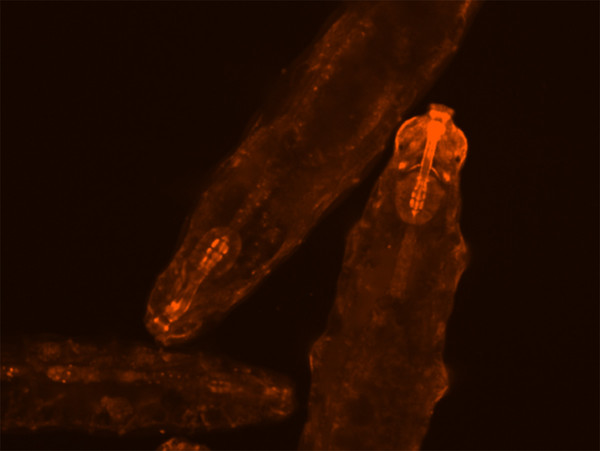The second year of the Meeting of the Tardigrade Hunters event was organized for high school students and others interested in these indestructible invertebrates by scientists from the Department of Experimental Biology of the UP Faculty of Science and the Institute of Molecular and Translational Medicine of the UP Faculty of Medicine and Dentistry. The meeting was attended by 26 students from all over the Czech Republic.
“It's actually a thank you to the high school students who worked together in the autumn to collect mosses and lichens where the tardigrades are found. The goal of the collaboration is to isolate new species, establish their cultures, and then use them to study the mechanisms that protect them against stress,” said Jiří Voller, the supervisor of the Badatel (Researcher) programme’s projects focused on the study of tardigrades’ resilience to stress.
These microscopic organisms are known for their resistance to stress, including radiation. In experiments, tardigrades have survived temperatures of up to 150°C and have been equally comfortable with the opposite extreme – freezing.
A total of 28 high schools across the Czech Republic participated in the autumn tardigrades hunt. “During the event, students observed the tardigrade specimens sent by us at school and in return provided samples they had collected themselves. After processing and photographing them on a professional microscope, we sent the images to the respective schools so that the students and their teachers could admire all which lives in their mosses,” explained Dominik Vítek.
During the meeting, students listened to several lectures focused on the biology of tardigrades. “Jitka Nováková from Valašské Klobouky High School and Barbora Machová from František Palacký High School in Valašské Meziříčí presented their research projects. Jitka, together with Jakub Pavlík from the Jakub Škoda High School in Přerov and Tadeáš Fryčák from the Jan Opletal Gymnasium in Litovel, are studying the resistance of tardigrades to neutron radiation. The experiments include irradiation in the VR-1 nuclear reactor at the Faculty of Nuclear Sciences and Physical Engineering of the Czech Technical University, automated microscopy, and image analysis using a convolutional neural network. Barbara is introducing tardigrades as a model organism for ecotoxicological studies,” added Voller.
During the excursion, the high school students demonstrated various microscopic techniques and answered questions from the students, who could observe, among other things, the transformation of an active tardigrade into a tun form, a resting stage resistant to extreme conditions and back.
“It is a matter of a few seconds before a tardigrade full of energy transforms into something seemingly inanimate,” explained Barbora Machová. “When scientists first observed this transformation, they were reluctant to believe that the reawakened tardigrade was the same individual. It was even more acceptable to them that it was its offspring,” added Nováková.
The students also visited the tissue culture laboratory, the molecular biology laboratory, and the infrastructure for high-format drug screening involved in the international EATRIS and OPENSCREEN projects.
